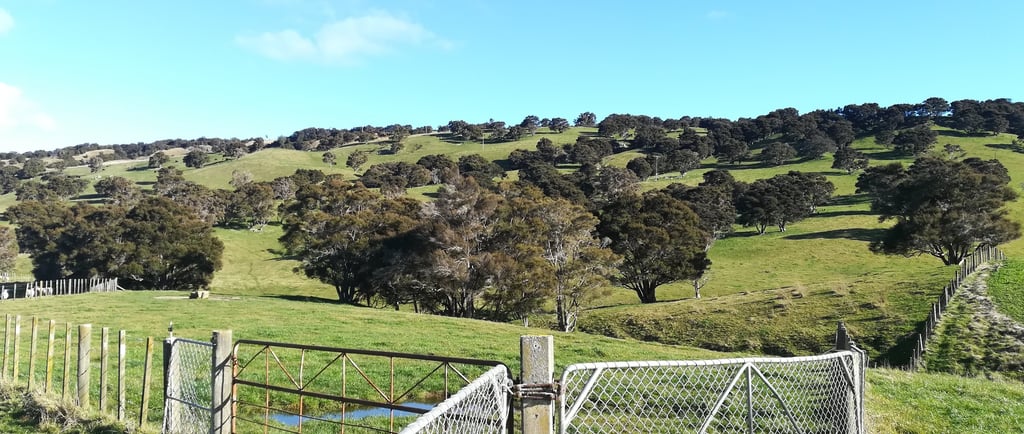Our vision for New Zealand hill country: A more productive and healthier hill country using trees
Blog post
Tom Mackay-Smith and Raphael Spiekermann
2/12/20242 min read


Right now, if you want to plant trees on hill country, there are few options.
You can generally only plant poplar or willow poles, or fence off and plant native bush or forestry.
Each of these are excellent choices in the right situation.
However, the options available as silvopastoral/space-planted trees are extremely limited.
Trees can provide a variety of benefits to farms.
Some recent research we did provides evidence that planting native trees at 10-20 m spacings could boost grass growth on sloped hill country compared to areas with no trees.
You can find the study here.
Studies from around the world show that in some situations when we help animals stay cooler, they are healthier and more productive.
In a first of its kind study in New Zealand, we found evidence that native bird numbers increased by 120% in a kānuka silvopastoral system compared to open pasture (soon to be published).
We want to help create more spatially diverse farms that are more productive and healthier.
Although the environmental benefits of planting trees are clear, we think tree planting strategies must consider the farm bottom line.
We have to remember that farms are businesses that sustain rural areas and the country as a whole.
Our aim is to develop a variety of tree planting options that make your farm more profitable, so you can pick which trees you want to plant based on what’s best for your farm and each individual paddock.
Imagine a hill country that…
Has native bush, forestry species or larger rooted tree species space-planted on the most susceptible slopes to erosion.
The gullies and streams are lined with vegetation.
The other sloped areas of the farm have smaller and less competitive trees that grow for hundreds of years, increasing pasture production, spatially distributing nutrients around the paddock, and moderating the climate in winter and summer for stock.
Other areas of the farm are strategically planted with value-add trees providing you with alternative income, such as from essential oil, honey or timber.
And the majority of these areas are earning you carbon credits.
We think this type of diverse landscape would dramatically reduce the sediment that enters streams, sequester more carbon, be flush with biodiversity, and most importantly be more profitable.
This is our vision for New Zealand hill country.
